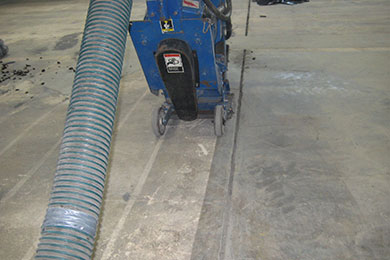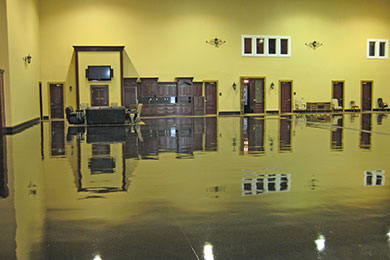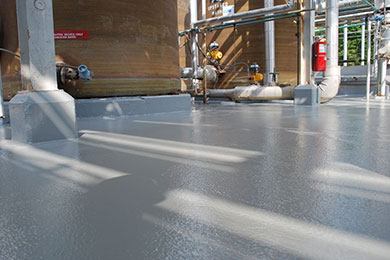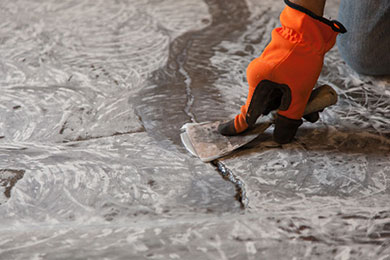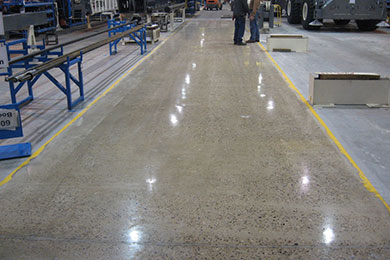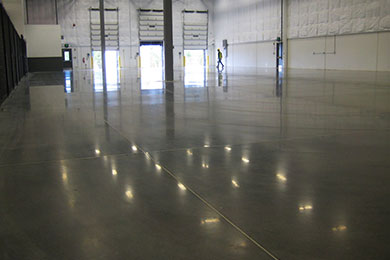5 Signs of an Improper Epoxy Coating Installation
Professional epoxy floor installers should always take the time to inspect your floors and prepare the surface prior to the installation of your epoxy coating. Failure to perform this simple task can leave you with floors that do not meet your expectations. Improperly installed epoxy coatings can severely reduce your floor's useful life. Common Problems with Improperly Installed Epoxy Coatings Air Bubbles Hard Lumps Peeling Surface Degradation Bubbles in the Coating Concrete is a porous material. This means that air can and does get into the surface. If the floor isn't properly prepared, primed and sealed, the air will come out of the concrete during the curing phase of the installation. When the epoxy coating cures, the mixture increases in temperature. This, in turn, heats the air inside the concrete, causing it to expand and create air bubbles between the concrete and the coating. If this happens you need a
How Can I Keep My Epoxy Flooring Looking New?
Epoxy flooring is one of the most reliable flooring systems that is convenient and has a beautiful appearance when maintained properly. Being able to keep it in good condition is key. Is there a secret to maintaining my floor’s like-new appearance? There are a few steps that can assist in the maintenance of your epoxy floors: Sweeping Sweeping the floor every day with a soft broom or dust mop can keep dust and other debris off the floor. Scrubbing Scrubbing the floor with an automatic scrubber on a regular basis makes a difference. Use a mild detergent to go over the floor weekly, or use heavy duty detergent for spot cleaning. Quickly clean spills When you have minor spills or fluids from a vehicle, it is best to wipe them up quickly to avoid staining. Use a soft cloth or paper towel. Use mats Using mats in certain areas will
3 Considerations When Selecting Flooring for a Chemical Containment Facility
Choosing a flooring material for a chemical containment facility involves a specialized set of criteria. Not only does the flooring need to stand up to the standard hazards that are present in an industrial setting, it must not be adversely affected by spillage and exposure to the chemicals in the building. While concrete is the standard choice for industrial flooring, its porous nature makes it unsatisfactory as a long-term solution without the addition of a specialized coating. Consider the following when choosing a concrete coating. 1. Value The budget for the flooring needs to be carefully considered, as it is one of the major criteria for a business. Whether the floor is new or an existing one is being reconfigured to meet a new need, a specialized concrete coating is needed so that the needs of such a facility can be met while still staying within budget. 2. Convenience Maintaining
3 Steps to a Successful Epoxy Coating Installation
If you have chosen to have an epoxy floor installed in your facility, then we congratulate you! Epoxy coatings are popular flooring choices across a wide variety of industries. Epoxy coatings are easy to clean, durable, and provide an unmatched shine that lights up your facility's space. Prior to installation, we have a few important steps for you to take to ensure a successful epoxy coating installation. Step #1: Schedule and Prepare Installation This all-important step seems like the most simple of all, but in reality it is much more complicated. Installing an epoxy floor means that you must schedule a time when all equipment will be removed from the space and employee traffic can be prohibited, both during the initial installation and while the floor sets. Since most businesses will not completely close down simply for the installation of new flooring, scheduling installation during times least likely to impact
5 Tips To Prevent Heavy Traffic From Taking Its Toll
Epoxy floors are great options for high traffic industrial areas, and manufacturing settings. Epoxy floors are particularly well known for their attractiveness and longevity. With routine maintenance, these floors will retain their newly installed look for years to come. Clean Up Spills Immediately The most important maintenance tip is to address spills immediately, whether they are liquids or solids. From a safety standpoint, spills represent a safety hazard in a high traffic area. Obviously, liquid spills create a slip and fall hazard for your customers and employees. You may be tempted to temporarily ignore a spill of dry material, but these also need immediate attention. Use a soft bristled broom to sweep up scattered materials before they can be ground into the flooring's surface. Protect Exceptionally High Traffic Areas Exceptionally high traffic areas like entrances are prone to increased wear and tear. Consider using rubber backed commercial area rugs to
What Type of Flooring Should I Choose For My Manufacturing Facility?
When planning for a new manufacturing facility, or a much-needed update of an existing space, choosing the correct flooring is critical. You may think that all floors are created equal, but nothing could be further from the truth. Choosing the correct flooring today can save you money and headaches down the road. Think Long-Term In general, preventing damage is much easier than repairing it after it occurs. If the floor is an especially hard surface such as concrete, you may think that it is virtually indestructible. In fact, uncoated concrete can easily be damaged by metal equipment that leaves grooves and gouges in the surface. When choosing a floor, consider all of the wear and tear that it will undergo for years to come. A polished concrete may be a better option for the long-term than a bare concrete floor.Polished concrete is resistant to chips and cracks, is easily maintained,

